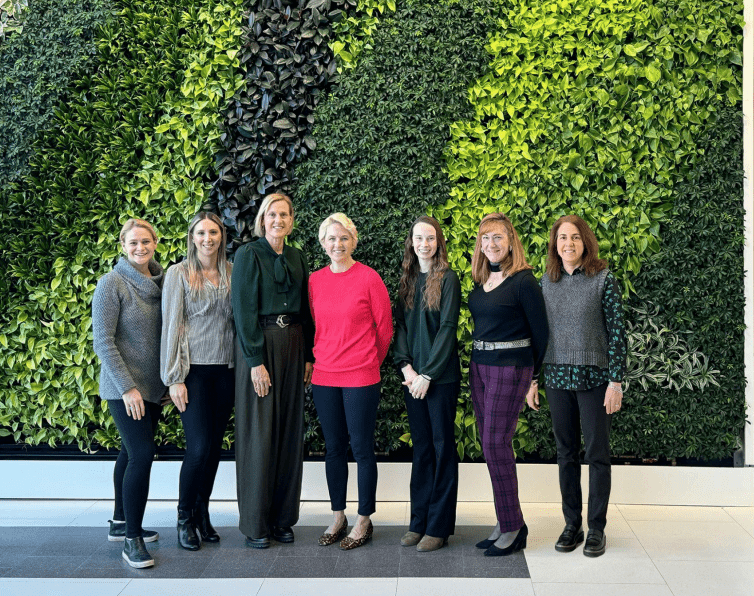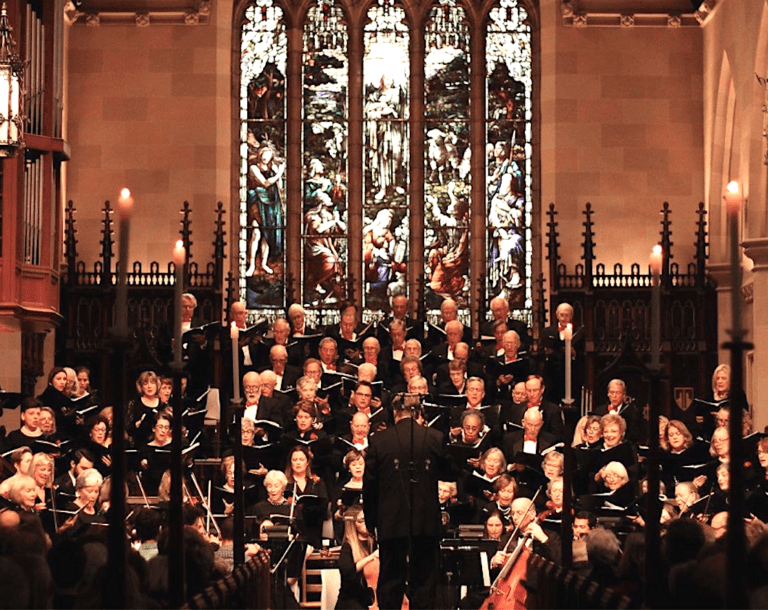By Richard Kaufman
The first RTM meeting of the year was held on Tuesday night, and it mostly featured discussion about the Greenwich police and whether they should return to directing traffic on the Avenue.
Police on the Avenue
A Sense of the Meeting Resolution (SOMR) was brought before the RTM on Tuesday night that called for Greenwich Police Officers to be returned to their traditional role directing traffic on Greenwich Avenue, “as their presence has been an essential part of the town’s character for many decades.”
Those in support of the SOMR also cited safety concerns for pedestrians and motorists due to the lack of officers at their traditional traffic posts, and they argued that the proposed intersection enhancement project for Greenwich Avenue and Elm Street will do little to increase pedestrian and motorist safety.
Because this was a first read of the resolution, it did not require a vote and will be taken up during the RTM’s March meeting.
In 2020, officers on the Avenue were redeployed with the goal of making public safety more streamlined and efficient. The redeployment, both First Selectman Fred Camillo and GPD Chief Jim Heavey said, was especially needed when the COVID-19 pandemic hit and fewer motorists and pedestrians were out.
As people began to go out again in the summer and the pedestrian mall on the lower portion of the Avenue was opened, the GPD needed more coverage. Instead of having officers stand stationary at their traffic posts for eight hours a day, officers now use bicycles to maneuver the downtown area.
Several people spoke in favor and against the SOMR.
Ed Dadakis, RTM member from District 1, said he was proud of his district for encouraging the resolution so a “community discussion could ensue on an almost century old tradition of police directing Greenwich Avenue traffic.”
Dadakis said that Greenwich Avenue can be chaotic, with drivers stopping in the road, and pedestrians crossing wherever they want without paying attention to their surroundings.
“Chaos is reduced and managed with police at the intersections. While police riding around on bikes is nice, it is the reliable presence of a police officer at the intersections which keeps order in an obvious and visible fashion,” he said.
Former First Selectman, Peter Tesei, also spoke in favor of the SOMR. He spoke about a friend of his who suffers from partial paralysis after being struck by a motorist on the lower portion of Greenwich Avenue several years ago. Fortunately, she survived, and in February of last year, she appealed to the BET Budget Committee to continue funding for officers on the Avenue.
“When you vote on this motion and you cast your vote, think of those older and infirmed residents and the vulnerable in our population. Keeping them safe is the hallmark of what Greenwich does,” Tesei said.
Tesei added that one regret of his tenure in office was accepting former Police Chief David Ridberg’s removal of an officer who directed traffic at Lewis Street.
First Selectman Fred Camillo said on Tuesday night that he has spoken to several police chiefs who believe having officers direct traffic is a waste of manpower. Camillo also cited studies done in the past in Greenwich that recommended the removal of officers from intersections.
He argued that traffic officers would not be able to respond adequately to criminal activity up and down the Avenue because they’d be on foot.
“This adds more security. There have never been more police officers on Greenwich Avenue than there are right now. That is a fact,” Camillo added. “We pay a lot of money to train these officers. To have them standing [directing traffic] just because it was done in the past doesn’t make any sense. Public safety is the number-one concern here. This addresses that. It’s a better use of our manpower.”
In the days leading up to Tuesday’s RTM meeting, GPD Chief Jim Heavey issued a letter opposing the SOMR. He said that while a vote to restore officers to fixed traffic posts on the Avenue would be non-binding and not mandatory, “It would be a virtual vote of ‘no confidence’ in the efforts by the Greenwich Police.”
Heavey spoke on Tuesday night and said that more officers are working on the Avenue for extended hours than before: 9 a.m. to 5 p.m. when directing traffic, compared to 7 a.m. to 6 p.m. on bicycles. The officers now help out with traffic issues as they arise.
The Department’s ORCA Team (Organized Retail Criminal Activity), which was developed in 2019 after an increase in crime downtown, works odd hours in a plainclothes capacity.
In a letter dated several days ago, Heavey pointed out the success ORCA has had in curbing crime downtown.
In the last year, ORCA has investigated 48 cases, resulting in 41 persons being arrested for 65 felonies, 37 misdemeanors and dozens of infractions. Many of the local arrests, Heavey said, were tied to major regional cases being investigated by federal law enforcement agencies.
Heavey said Tuesday night that he views the issue as an emotional attachment to upholding the tradition of having police in Greenwich Avenue intersections, versus a necessity to redeploy officers. He said that his inspiration in moving forward and changing stems from the credo that was developed as part of the department’s strategic plan for how they will operate in the years to come.
“We should embrace change, create value and inspire others,” he said.
SOMR on Formation of Cardinal Stadium Building Committee Withdrawn
A Sense of the Meeting Resolution calling for the formation of a building committee to oversee construction for the Cardinal Stadium improvement project was withdrawn before the Representative Town Meeting on Tuesday night.
Twenty-one members from District 9, who led the SOMR, issued a letter on Tuesday explaining their decision to withdraw.
“District 9’s focus was, and remains, how the town should responsibly manage this spending and ensure that it implements good processes for infrastructure investments. Our belief is that the building committee model is a powerful mechanism – with specific guidelines regarding composition of committee members, public meetings, and fiscal oversight – that can ensure transparency in process for town projects from start to completion,” the letter said.
The Cardinal Stadium project is a multi-phase project which costs $13.3 million. It’s one of many projects that make up the nearly $300 million in capital spending on the horizon for the town.
The public had resisted the SOMR in recent days, because they felt that putting together a building committee would delay the construction of the new bleachers from being completed by graduation in June.
District 9 members made it clear that they support the project and did not want to delay progress with the SOMR.
“While there was broad support for the concepts of budget oversight and visibility for major projects, we were surprised that the discussion over the SOMR shifted from fiscal responsibility to questioning whether those in favor of the SOMR actually wanted the stadium project to move forward. To be clear, negatively impacting the stadium project was not the intention of the SOMR. District 9 is fully supportive of the project and appreciative of those who have worked so hard to advance it to its current state,” the letter said.
The letter went on to say that District 9 plans to continue the dialogue.
“Our intention is to…bring before the RTM a more substantive measure to address the broader topic of how the town should manage capital projects as impactful as Cardinal Stadium. We fully intend to bring the topic of building committees back to the RTM to ensure a continued discussion on the concepts of oversight and transparency for town investments.”
The project is currently in Phase 1A, which includes the construction of new home-side bleachers that are ADA accessible with a press box, elevator, new bathrooms and a team room that will go below the bleachers. Phase 1B includes the addition of new lights on existing poles, handicap parking, and an entry kiosk.
Phase 2 would include the creation of a new access road from behind the school to East Putnam Avenue.
Appeal on Eastern Greenwich Civic Center Plans Withdrawn
An appeal by members of the Greenwich Athletic Foundation (GAF) to change proposed plans for a new Eastern Greenwich Civic Center was withdrawn prior to the Representative Town Meeting on Tuesday.
Members from the GAF wanted to see a field house added to the proposed plans, which they believe would have provided the town with a playing surface that could be used year-round to address the town’s long-standing problem of field shortages.
However, members of the EGCC Committee believed that adding a field house to the plans now would delay the project and increase costs. After the appeal received no support between RTM committees leading up to the full RTM meeting, and because the GAF did not want to stop the project from continuing, it was withdrawn from the agenda.
Currently, the proposed project would completely replace the current 31,765 square foot two-story structure at 90 Harding Rd., in Old Greenwich.
The new building, which would be one story and about 35,418 square feet, would be ADA compliant and energy efficient. It currently has an estimated budget of $15 million.
The building, which EGCC Committee Co-Chair, Gary Dell’Abate, has called “a community civic center, not just a sports complex,” in the past, would feature a full-sized multi-use gymnasium with roll-out spectator seating; an 8,100 square foot multi-use event space; three 1,000 square foot activity rooms; and a storage room for gym and activity equipment.
Work on the surrounding playing fields will not be included in the project, and playing fields would be usable during construction.
The existing building was built in 1950 as an employee recreation center for Electrolux. The town later acquired the building and the 13.22 acre site in 1966.




